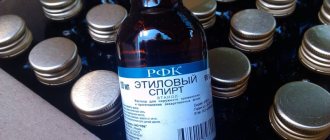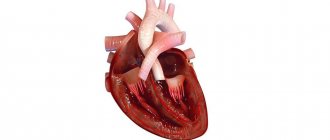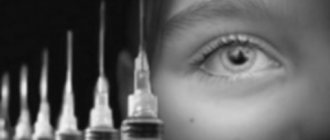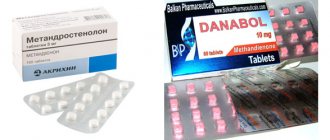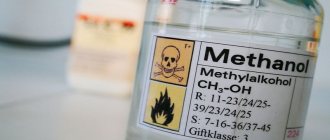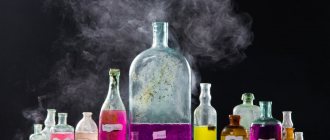How does nitrogen affect the body?
Nitrogen has a harmful effect on the central nervous system.
It penetrates neurons and interacts with them, producing a narcotic effect. Severe poisoning occurs when nitrogen enters the air, where the oxygen concentration is less than 7%. Inhaling nitrogen in its pure form for 2-3 minutes is dangerous for children and adults.
Nitrogen dioxide pollutes the environment. It appears in the lower layers of the atmosphere in the form of smog. Excess of the compound in the air causes coughing and difficulty breathing.
The increased oxidative capacity of this gaseous substance and the formation of free oxygen radicals indicate its danger to the human body. What harm can ozone cause to humans? It damages and irritates the tissues of the respiratory organs.
Ozone acts on cholesterol contained in the blood, causing atherosclerosis. When a person spends a long time in an environment that contains a high concentration of ozone, male infertility develops.
In our country, this oxidizing agent is classified as the first (hazardous) class of harmful substances. Its average daily MPC should not exceed 0.03 mg per cubic meter.
The toxicity of ozone, the possibility of its use to destroy bacteria and mold, is actively used for disinfection. Stratospheric ozone is an excellent protective screen for earthly life from ultraviolet radiation.
Nitrogen oxides are even more harmful to the human body than carbon monoxide. The general nature of the effect varies depending on the content of various nitrogen oxides: NO2, N2O3, N2O4. The greatest danger is NO2. Exposure to nitrogen oxides in humans leads to dysfunction of the lungs and bronchi.
Children and adults suffering from cardiovascular diseases are more likely to be exposed to nitrogen oxides. In the air, nitrogen oxides, depending on the concentration, cause: irritation of the mucous membranes of the nose and eyes C = 0.001 vol. %, beginning of oxygen starvation C = 0.001 vol. %, pulmonary edema C = 0.008 vol. %.
When nitrogen dioxide comes into contact with a moist surface (mucous membranes of the eyes, nose, bronchi), nitric and nitrous acids are formed, which irritate the mucous membranes and damage the alveolar tissue of the lungs. At high concentrations of nitrogen oxides (0.004 - 0.008%), asthmatic manifestations and pulmonary edema occur. When inhaling air containing nitrogen oxides in high concentrations, a person does not have any unpleasant sensations and does not expect negative consequences.
With prolonged exposure to nitrogen oxides in concentrations exceeding the norm, people develop chronic bronchitis, inflammation of the gastrointestinal mucosa, suffer from heart weakness, and nervous disorders. NO2 is heavier than air, so it collects in depressions and ditches and poses a great danger during vehicle maintenance.
A sensation of odor and slight irritation in the mouth is observed at a NO2 concentration of about 0.0002 mg/l. Nitrogen oxides also have a harmful effect on the human nervous system. The content of nitrogen oxides in the atmospheric air above 0.28 mg/m3 leads to damage to some plant species, difficulty breathing, coughing in children and contributes to the development of respiratory diseases.
Nitrogen oxides also have a negative effect on vegetation, forming solutions of nitric and nitrous acids on leaf blades. This same property is responsible for the effect of nitrogen oxides on building materials and metal structures. In addition, they participate in the photochemical reaction of smog formation. In the exhaust gases of diesel engines, concentrations of CO and NOx can reach 0.5% (by volume).
Why is gas called "laughing"?
When exposed to the human body, nitric oxide causes a strong feeling of excitement, turning into euphoria, which is why it was called “laughing gas”. The authorship of the name belongs to the Englishman Davy Humphrey, who studied chemical reactions and, during an experiment, personally experienced the effect of gas on the body.
He found that when inhaled in a small dose, a person’s motor activity increases, an unreasonable desire to laugh arises, and behavior becomes inappropriate.
Nitrogen dioxide: formula, characteristics
A mild degree of intoxication does not lead to complications, but requires observation by a specialist. Severe poisoning leads to chronic diseases.
Consequences:
- Disorders of the heart, blood vessels, and blood clotting.
- Digestive system disorder, colitis, inflammation, peptic ulcer.
- Pathology of the lungs and respiratory system.
Preventive measures will help avoid poisoning. In production, the safety engineer must provide instructions before each work estimate. And in the event of an emergency, provide people with gas masks or protective respiratory masks.
Scuba divers should not stay under water for longer than the prescribed time. A ground instructor ensures safe navigation and will provide assistance in the event of an emergency.
In everyday life, nitrogenous substances should be stored in a closed container out of the reach of children.
Nitrogen is an important component of the life cycle. The metallurgy and oil refining industries cannot do without it. Gas is widely used in medicine and light industry. Poisoning with a substance leads to irreversible health consequences. Therefore, it is necessary to be extremely careful when working with nitrogen.
How can you get ozone? A substance whose formula is O3 is formed by passing an electric discharge through dry oxygen. The process is carried out in a special device - an ozonizer. It is based on two glass tubes, which are inserted into one another. There is a metal rod inside and a spiral outside.
The process of converting oxygen into ozone is an endothermic reaction that requires significant energy expenditure. Due to the reversibility of this transformation, ozone decomposition is observed, which is accompanied by a decrease in the energy of the system.
Due to its atomic structure, nitrogen exhibits different oxidation states and therefore forms a wide variety of molecules and compounds. Why is nitrogen dangerous for humans? In its pure form, the gas leads to rapid cessation of breathing and death, in the form of nitrates it provokes the growth of carcinogenic cells, nitrites depress the nervous system and promote the formation of methemoglobin and hemolysis (destruction of red blood cells). The toxic effect begins quickly. It affects the respiratory system - help should be provided to the person as soon as possible.
Ammonia – NH3
A gaseous substance that is an important source of nitrogen for humans. It is formed naturally in the body after the metabolism of amino acids, and is then neutralized by an enzyme to urea. Ammonia is toxic in high concentrations, and the ability to neutralize the compound is impaired in people with liver disease.
In case of poisoning with ammonia that enters through the respiratory system, quite strong pharmacological effects are possible. Long-term overdose causes toxic pulmonary edema and serious damage to the nervous system, causing a person to suffocate. It exhibits its effect not only locally, but also enters the systemic bloodstream.
Direct contact with vapor or liquid ammonia is likely to cause severe irritation to the eyes and skin. Prolonged exposure to ammonia will lead to chemical burns of the conjunctiva, deterioration or loss of vision, itchy skin and coughing attacks. First aid is to flush your eyes and skin with plenty of water.
Hydrazine - N2H4
An organic compound that is a very toxic liquid with an unpleasant odor. It is used in industry for the production of plastics and rubber, as well as in medicine for the treatment of malignant tumors of various locations. Hydrazine derivatives are very toxic, causing irritation of the visual apparatus and respiratory tract, a high likelihood of convulsions, pulmonary edema, followed by coma and death.
Laughing gas - N2O
Nitrous oxide can produce an intoxicating effect. In high concentrations it has a neurotoxic effect. This effect of nitrous oxide on the body has found its application in medicine as inhalation anesthesia. For anesthesia, a mixture with oxygen of the correct concentration is used, which is safe for health.
The problem with such anesthesia remains anoxia - a state of oxygen deficiency that can lead to death. Nitrous oxide has been found to be toxic to blood cells and often causes anemia and spinal cord damage. The compound is still used for anesthesia, but not so widely due to possible health consequences: an increased risk of developing pneumonia, infections, and brain damage.
Medicine is gradually switching to more modern and safe narcotic drugs. Halothane is used for inhalation drugs, and barbiturates for non-inhalation drugs.
Illegal nitrous oxide-based mixtures are gaining popularity, and are advertised as a fun and mood-enhancing product. The substance really causes euphoria, which can develop into hysterical fits of laughter and loss of orientation. Gas is openly sold in nightclubs and on the Internet.
Its regular use can lead to serious health problems, in particular, damage to the nervous and respiratory systems, paresis through neutralization of the effect of vitamin B12.
The compound also has a gaseous state and is very poisonous. In the human body, nitric oxide is synthesized in small quantities and has a vasodilating effect, which leads to improved blood circulation. Endogenous NO helps prevent tissue ischemia and reduce blood pressure in people with hypertension. However, exceeding the concentration and poisoning by inhalation leads to great toxicity of the poison.
Nitrogen dioxide - NO2
Nitrogen dioxide has a specific odor and high chemical activity. Even in small concentrations, it negatively affects the respiratory system, leading to pulmonary edema. Additionally, nitric oxide poisoning causes irritation of the eye mucosa in people, and also changes the composition of the blood in the direction of increasing the content of methemoglobin.
The gas may be present in the air of large cities with poor sanitary and hygienic conditions. Therefore, nitrogen dioxide damage is often chronic.
Nitric acid is another toxic compound for the human body. Its salts (nitrates) are widely used for the preparation of fertilizers, medicinal substances, and the production of fuel. Both poisoning by nitric acid vapors and direct contact with liquid are dangerous. When inhaled, the substance irritates the mucous membranes of the respiratory tract, and on the skin it provokes long-healing ulcers. Even short-term inhalation of the compound can cause death. Such vapors are 10 times more toxic than carbon monoxide.
Nitric acid salts act as strong oxidizing agents. In the human body, they are converted into nitrites (salts of nitrous acid), the action of which contributes to the formation of methemoglobin and the development of oxygen starvation. Acute nitrate poisoning is possible, but more often occurs in a chronic form. Intoxication is diagnosed when the methemoglobin concentration reaches 15%.
Symptoms of acute poisoning will be:
- cyanosis of the skin and nails;
- dizziness, drowsiness;
- cardiopalmus;
- nausea and vomiting;
- bloody diarrhea;
- shortness of breath, tinnitus.
Chronic intoxication is less pronounced - weakness, pallor, and fatigue are observed.
Ammonium nitrate - nitrate, used as nitrogen fertilizer
Can a person breathe nitrogen? Inhaling nitrogen in the air is completely harmless. However, when pure N2 is inhaled, the oxygen pressure in the blood will drop to zero, causing hypoxia. This will lead to loss of consciousness and the inability of a person to save his life. Already at 5% oxygen concentration and 95% nitrogen concentration in the inhaled mixture, loss of consciousness will occur within 40 seconds. Clinical symptoms will quickly appear and increase, but the person will not be able to recognize and respond to them.
The well-known deep-seated disease is associated with an increased concentration of nitrogen. The oxygen mixture in the cylinders contains nitrogen, which, when immersed to a depth below 45 m, has a toxic effect on the brain. The first signs are weakening of attention, the appearance of excitement and panic, or an attack of euphoria.
At the first signs of poor health, the diver should be raised from the depths and provided with access to fresh air, freed from equipment. The narcotic effect of nitrogen usually wears off as the diver rises from the depths to the surface. To prevent danger, you need to dive with a group of people, and also maintain contact with each other in order to suspect a problem in time.
Consequences and prevention
If assistance is provided in a timely manner, the chances of avoiding complications are quite high. However, severe intoxication can provoke further development of pathological conditions in a person, which include:
- diseases of the gastrointestinal tract and respiratory tract -
- bleeding disorder -
- difficulty in gas exchange in the alveoli -
- disturbances in the functioning of the heart.
In some cases, long-term symptomatic therapy in a hospital setting is required.
To prevent gas poisoning, it is necessary to prevent violations of safety precautions in activities related to it. Work with nitrogenous fertilizers must be carried out in personal protective equipment. Industrial enterprises that use nitrogen compounds must be equipped with gas masks, and workers must be provided with safe working conditions.
Diving enthusiasts need to carefully monitor their condition when slowly diving to depth. It is recommended not to dive alone, especially if you are sensitive to nitrogen.
Diagnostics
104. The toxic effect of nitrogen in diving practice is understood as a pathological state of the body that develops as a result of exposure to increased partial pressures of this gas and manifests itself in inhibition of the functions of the central nervous system.
The severity of the toxic effect of nitrogen is directly dependent on its partial pressure in the inhaled gas environment and the duration of exposure.
105. The toxic effect of nitrogen in diving practice is observed:
when using compressed air for breathing at depths where the partial pressure of nitrogen exceeds permissible values -
in case of violation of the rules of replacement supply or preparation of artificial respiratory gas mixtures (ARG) -
in case of violation of the rules for washing diving equipment after changing the DGS during the diver's immersion under water -
when switching off from equipment at depths of more than 70 m and breathing the air environment of a diving bell.
The toxic effect of nitrogen can be observed among submariners in emergency situations:
in dry or semi-flooded compartments with compression exceeding 6 kgf/cm 2 -
when leaving submarine compartments from depths of more than 100 m without using an additional helium balloon.
The toxic effects of nitrogen can be enhanced by the following factors:
increased or decreased temperature -
increased content of carbon dioxide or harmful substances (carbon monoxide, nitrogen oxides) in the inhaled gas environment -
hard physical work.
106. The first manifestations of the toxic effects of nitrogen occur in humans at a partial pressure of 0.4 MPa (4 kgf/cm2) and are expressed in decreased self-control, increased talkativeness and causeless laughter. The opposite reaction may be observed - the appearance of depression and a feeling of fear.
At partial nitrogen pressures of 0.5-0.6 MPa (5-6 kgf/cm2), a state similar to mild alcohol intoxication develops. The previously described manifestations are more pronounced, and euphoria becomes the leading symptom. Under these conditions, the majority of divers continue to maintain physical performance and general good health. A further increase in the partial pressure of nitrogen to 0.7-0.9 MPa (7-9 kgf/cm2) leads to impaired coordination of movements, a disorder of general orientation, and a decrease in intelligence. The feeling of intoxication increases, performance is lost. Divers perform poorly or cannot perform work under water, do not respond to the instructions of the descent commander, do not navigate their location, lose control of diving equipment and take rash actions that can lead to emergency situations.
At partial nitrogen pressures above 1-1.2 MPa (10-12 kgf/cm2), divers experience visual and auditory hallucinations, loss of consciousness and a narcotic sleep.
The clinical picture of the toxic effects of nitrogen largely depends on the individual sensitivity of a person, his functional state and diving experience.
Manifestations of the toxic effect of nitrogen are reversible and disappear after breathing gas mixtures with a lower partial pressure.
Treatment
107. If signs appear indicating a decrease in mental and physical performance or inappropriate behavior of divers, it is necessary to immediately stop the descent and, if the divers’ health worsens, take measures to raise the divers to the surface. If the diver loses consciousness, a safety diver comes down to help him, who must lead the victim into the bell (to the gazebo) and wash (ventilate) the diving equipment. To remove the toxic effect of nitrogen during descents using air, the depth of descent should be reduced by 5-10 m. During deep-sea descents, divers are transferred to breathing gas mixtures with a reduced nitrogen content or a 6% oxygen-helium mixture.
The consequences of short-term exposure to high partial pressures of nitrogen do not pose a danger to the health of divers and do not require drug therapy, however, persons who are least resistant to the toxic effects of nitrogen are monitored by a special physiologist during the descent.
Warning
108. In order to prevent nitrogen anesthesia during the decompression process, it is necessary to switch to air breathing at depths of no more than 70 meters. The composition of the artificial gas mixtures supplied for breathing, the order of their change, and the correct connection to the gas supply panel should be strictly controlled. Descents while breathing compressed air to depths of more than 60 m can be carried out only in exceptional cases related to providing assistance to an emergency diver or personnel of an emergency submarine.
Considering the possibility of adaptation of the human body to the toxic effects of nitrogen, it is necessary to conduct training descents in a diving pressure chamber at least 1-2 times a month using compressed air for breathing.
Laughing gas, or nitrous oxide, is a substance popular among young people, which some consider a harmless means of entertainment, while others consider it a dangerous drug. In high concentrations and prolonged inhalation, it can cause serious harm to human health.
Effect of nitrogen dioxide on vision
Nitrogen is widely used in all areas of activity in liquid, gaseous or dry form. The main cause of poisoning is improper use of gas and violation of safety regulations. An overdose occurs due to a high concentration of nitrogen in the air.
Causes of poisoning:
- An industrial emergency caused by the release of nitrogen into the air. The substance is used in the metallurgical and oil refining industries; it is used to fill cylinders for transporting goods. Improper transportation or violation of storage conditions causes intoxication.
- Violation of taking medications or inhalations. Nitrous oxide is used in medicine for inhalation anesthesia. The inhalation concentration level is 95%, exceeding is hazardous to health. Vasodilator medications contain another substance - nitric oxide. Uncontrolled use leads to poisoning.
- Violation when working with nitrogenous fertilizers or dyes. Nitrogen is added to plants to improve metabolism. It is necessary to protect the skin and respiratory tract during feeding.
- Prolonged stay of divers under water. For underwater work, breathing cylinders containing a high concentration of nitrogen are used. Immersion for more than the prescribed time causes intoxication. Depths above 25 meters are especially dangerous.
- Burning video and film. Burning this type of film is prohibited, as large quantities of nitrogen are released into the atmosphere.
- Ingestion of a nitrogenous compound. Taking foods in large quantities with the additive E942 is dangerous for the health of adults and children.
Nitrogen poisoning occurs in two ways: through the respiratory system or through the gastrointestinal tract. Symptoms of intoxication appear after a quarter of an hour. The degree of poisoning can be mild or severe.
Signs of mild poisoning:
- dizziness;
- nausea;
- intoxicated state;
- dry cough.
Signs of severe poisoning:
- vomit;
- sudden attacks of causeless anxiety;
- muscle spasms accompanied by pain;
- cramps of the arms and legs;
- difficulty breathing, severe wet cough, pulmonary edema;
- oppression and weakness;
- cyanosis (cyanosis) of the skin and nasolabial triangle, development of hypoxia;
- tachycardia and arrhythmia;
- temperature increase;
- increased blood pressure.
If you suspect nitrogen oxide poisoning, you should call an ambulance. Before medical personnel arrive, the victim is provided with access to fresh air.
The victim must be given first aid. In case of poisoning with nitrogen compounds, hypoxia develops, which leads to disruption of the functioning of the brain and heart. It is important to take the person out of the room into the air, while maintaining personal safety (wear a respirator or gas mask).
The victim must be reassured and explained that he is safe. If possible, give strong sweet tea without preservatives or additives, and give water.
If the victim is in a state of fainting, you need to lay him on his side and place a cushion or pillow under his head. It is important to monitor the work of the heart muscle (pulse) and the presence of breathing, as pulmonary edema is possible.
An overdose of nitrogen is harmful to health, so the victim needs treatment in a hospital. It is not recommended to self-prescribe medications. Drinking plenty of warm fluids will help ease the victim's condition.
The medical facility administers calcium chloride therapy (10%) to calm the nervous system and remove toxins from the blood. A glucose solution (40%) is prescribed to improve metabolic processes and dilate blood vessels. Caffeine (1%) is injected under the skin to restore breathing and heart function.
For heart failure, Cordiamine is prescribed. Codeine is prescribed as a drug for cough and pain. The victim is given diuretic medications to reduce the level of toxicity. If fluid accumulates in the trachea, it is sucked out. If panic attacks and anxiety are observed, sedatives are prescribed.
Therapy is carried out depending on the toxic substance. In case of intoxication with liquid gas (nitrous oxide), Carbogen is prescribed to improve blood flow. In case of sodium nitrate poisoning, wash the gastrointestinal tract with glucose solution.
The victim is prescribed a set of restorative procedures. Refusal of clinical treatment leads to serious consequences or death.
If you suspect nitrogen poisoning, you should immediately call emergency medical help. If a person continues to inhale nitrogen-polluted air, they should be immediately taken outside to a safe place.
Nitrogen is a very treacherous substance. Having no smell and color, it quietly poisons a person. Suspicion of intoxication can develop only after the appearance of pronounced clinical signs of poisoning.
When removing a person from a dangerous area with nitrogen-polluted air, you need to take care of your safety. According to safety regulations, before entering an area where nitrogen has been released, you must wear a gas mask.
A person who has inhaled nitrogen needs to be reassured and told that his life is not in danger. Unbutton his shirt and tie, make sure nothing interferes with his free breathing.
If you have the opportunity, give him warm, sweet tea or water. The liquid will help bring him to his senses and reduce intoxication syndrome.
High concentrations of nitrogen can enter the body through inhalation of gas vapor or ingestion. Symptoms of intoxication begin to appear within 15 minutes. Depending on the measures taken, they develop to a mild or severe degree.
In mild cases of nitrogen poisoning, mild dizziness, a dry cough, and a state similar to intoxication are observed. Severe intoxication affects:
- respiratory system: severe cough, pulmonary edema,
- skin: blueness and pallor,
- cardiovascular system: arrhythmia, tachycardia, increased blood pressure,
- muscles: spasms, cramps,
- Gastrointestinal tract: abdominal cramps, pain, mouth, diarrhea.
Nitric oxide and nitric acid poisoning requires the following measures:
- rinsing eyes with water for at least 10 minutes,
- cleansing the area of skin that has been exposed to the chemical compound with clean water or a weak soda solution,
- gastric lavage using a tube method when swallowing a substance,
- administration of morphine or atropine in a hospital setting.
Is nitrogen in the air caused by industrial emissions harmful? Exceeding the concentration of nitrogen compounds in the atmosphere is a modern environmental problem. Such violations negatively affect the health of all city residents and can lead to chronic intoxication. At standard nitrogen concentrations it is completely safe.
This compound is characterized by a specific odor, which in significant concentrations becomes suffocating. Has high chemical activity. Interacts with non-metals, in reactions with which it acts as an oxidizing agent. On contact with water it turns into nitric acid, and in an alkaline environment it forms nitrites and nitrates.
Cu 4HNO3 → (CuNO3)2 2NO2↑ 2H2O.
In addition, the compound is formed during the thermal decomposition of lead nitrate.
In industrial conditions it is used in the production of nitric and sulfuric acids, as a nitrating agent for the production of anhydrous nitrates and as an oxidizing agent in mixed explosives and liquid rocket fuel.
According to a number of literary sources, the effect of nitrogen dioxide on the human body reduces its resistance to diseases and leads to oxygen starvation of tissues. This is especially acute in children. Nitrogen dioxide also increases the effect of carcinogenic substances and the resulting occurrence of malignant neoplasms.
Some researchers attribute increased mortality from cancer and cardiovascular diseases in certain areas to high levels of NO2 in the air.
In people who worked for 3-5 years with a NO2 content in the air of the working area of 0.8-5 mg per cubic meter. meter, chronic bronchitis, inflammatory changes in the mucous membrane of the gums, pneumosclerosis complicated by asthmatic attacks, and bronchiectasis were observed. In addition, there was an increase in the maximum osmotic resistance of erythrocytes, acceleration of blood clotting, a tendency to hypotension, granulocytosis, a decrease in catalase activity, sugar content and the level of globulins and albumins in the blood.
In children living in areas where nitrogen dioxide was present in concentrations of 0.117-0.205 mg per cubic meter. meter, changes in forced expiratory volume and an increase in morbidity were detected. In addition, changes in the configuration of lymphocytes and monocytes and an increase in the resistance of erythrocytes were observed in blood smears.
Nitrogen, along with oxygen and carbon, is part of many biologically important molecules. In fact, it is one of the elements of life that affects all basic processes. Poisoning occurs as a result of its oxides entering the body. The respiratory tract is especially affected, so inhalation of harmful vapors of these gases should be avoided.
Causes of nitrogen dioxide intoxication:
- inhalation of exhaust gases;
- industrial accidents;
- working with nitrogenous compounds without the help of protective equipment;
- metal smelting;
- working with explosive products;
- violation of safety regulations in the production of pharmaceuticals (for example, continued work without appropriate protection in the presence of a specific dioxide odor).
The toxin can cause both short-term damage to the body (manifested by temporary confusion, respiratory depression) and have a long-term effect. So, after some time, the substance penetrates the adipose tissue and dissolves, which leads to intoxication and damage to the central nervous system. As a result, the functioning of not only the respiratory but also the cardiovascular system is disrupted, and cognitive functions are inhibited.
First aid and treatment in case of injury
The life of the victim depends on the speed of actions of those around him, since he is often unable to help himself due to the development of nitrogen intoxication or fainting. Necessary:
- Remove the person from the area of high nitrogen concentration. In the event of an accident at an enterprise or during the military use of gas, put on a gas mask or respirator on yourself, then on the injured person.
- Call for medical help.
- Provide oxygen to the poisoned person, loosen tight clothing, and untie the tie.
- After the patient regains consciousness, give him plenty of fluids (water or sweet tea).
If a diver is intoxicated, it is necessary to slowly rise to the surface, check his pulse and breathing, provide him with oxygen, warmth and immobility.
Further assistance is provided by specialists in a hospital setting and under monitoring of vital signs. Actions are aimed at reducing the amount of inert gas in the body. An oxygen mask is used, glucose is administered intravenously, and if pulmonary edema develops, a calcium chloride solution is administered. If cardiac activity is impaired, a 10% caffeine solution and other vascular agents are injected subcutaneously.
It is important to remember that you should not refuse medical care or hospitalization even with mild nitrogen poisoning. Despite apparent well-being, disturbances may occur in the body that can lead to serious consequences.
Fatal cases of nitrogen asphyxia
Deaths from nitrogen asphyxiation are not uncommon. According to the US government's Chemical Safety and Accident Investigation Commission, between 1992 and 2002 in the US there were 80 deaths from nitrogen asphyxiation in industrial plants, as well as in medical and scientific institutions. A search in Russian search engines allows you to find multiple references to similar accidents that occurred in Russia.
As one might expect, most nitrogen asphyxia deaths occur in enclosed spaces without adequate ventilation. On the contrary, anecdotally, a significant proportion of cases occurred as a result of the mistaken use of nitrogen instead of compressed air: for example, a worker mistakenly used nitrogen to blow out equipment in a small enclosed space. Without expecting the creation of a nitrogen gas environment and without noticing it, the worker died; his colleague, trying to save him, also died.
In another case, three workers were cleaning internal filters in a hydrogen storage tank. Before this, the tank was purged with nitrogen. One of the workers climbed the technical elevator to the top of the tank, equipped with a hatch, and in the process of performing work, he partially leaned into the tank. After some time, his colleagues noticed that the worker did not respond to calls to him; it turned out that he was unconscious; he later died.
In another case, two contractor employees were blasting pipes inside a boiler at a chemical plant. Both were breathing through respirators connected to a 12-ball cage of air tanks. The third worker was outside; after a while, he tried to call his colleagues with the sound of a pneumatic horn, but he did not receive an answer.
A similar triple fatality occurred while working in a paint booth that had previously been mistakenly purged with nitrogen instead of compressed air.
Another incident occurred when a labor contractor attempted to use a pneumatic jackhammer to chip away deposits from a furnace at an aluminum smelter. Finding 2 compressed gas main lines, one labeled “natural gas” and the other with an old piece of cardboard labeled “air” attached to it, the worker attached the hoses from that line to a hammer and to his respirator. The improperly labeled line contained nitrogen and the worker suffocated.
Use of the substance in various fields
There are three types of nitric oxide:
- Technical – used in automotive production and welding.
- Medical - widely used as anesthesia.
- Food grade – is one of the important components in the production of aerated chocolate and confectionery products.
A technical nitrogen compound is introduced into the car engine mechanism, namely into the intake manifold to improve its performance. Under its influence, the engine power increases for some time.
For medical purposes, the substance is used for anesthesia and anesthesia during surgery and during childbirth. In addition, the use of gas is allowed to prevent shock in injuries, to increase the analgesic effect of other drugs, as well as to eliminate pain during a heart attack and pancreatitis. Nitrous oxide is available in liquid form in 10 liter cylinders.
In the food industry, this component is known as additive E-942. It is used as a propellant in products produced in aerosol containers.
Biological effect on the body
At relatively low concentrations, nitrogen dioxide in the atmosphere can impair breathing. So, already when its content in the air is 0.056 mg per cubic meter. meter in a healthy person there is an increase in airway resistance. According to the World Health Organization, in people suffering from chronic diseases of the respiratory system, these symptoms are observed already at a NO2 content in the air of 0.04 mg per cubic meter. meter.
Pulmonary edema may result from exposure to high concentrations of nitrogen oxides. This is explained as follows. When they enter the body and interact with moisture, nitrogen dioxide and nitric oxide form nitrous and nitric acids, which corrode the walls of the alveoli of the lungs. They, like blood capillaries, become easily permeable.
With prolonged exposure to nitrogen oxides, a person becomes more susceptible to pathogens that cause respiratory diseases. The resistance of the lungs to bacteria worsens, the alveoli and cells in the roots of the bronchi expand, bronchitis, pneumonia, etc. are more common.
People with heart disease and chronic respiratory disease are more likely to develop complications from short-term respiratory infections because they are more sensitive to the direct effects of nitrogen dioxide.
Symptoms of poisoning
Nitrogen is a gas that has neither color nor odor, so it is very difficult to timely assess the risk of poisoning without special measuring instruments. The situation is also aggravated by the slow development of signs of intoxication: at first, a person may simply not notice how his body is losing oxygen, and poisoning occurs gradually over quite a long time.
Main symptoms of nitrogen poisoning:
- First of all, a cough appears, which is then accompanied by pain in the chest -
- at the beginning of the intoxication process, attacks of euphoria, causeless gaiety and motor disinhibition may appear -
- after some time, euphoria gives way to apathy, severe weakness, tremors of the limbs and a feeling of fear arise -
- symptoms may subside and increase again, while the poisoning of the body continues -
- the skin takes on a bluish tint -
- body temperature rises, cough contains blood or foam,
- with the development of pulmonary edema, attacks of suffocation are observed.
Death is possible from inhalation of pure nitrogen or from prolonged exposure to an atmosphere containing at least 90% inert gas.
Death most often occurs as a result of severe respiratory failure or oxygen deprivation of the brain.
What to do if a poisoned person loses consciousness
Loss of consciousness is a common symptom of nitrogen intoxication . In this situation, it is important not to panic and try to support the life of the victim until the ambulance arrives. Place him on a hard, flat surface on his back.
To prevent a person from choking on his own sunken tongue, saliva or vomit, his head must be turned to the side. In this position, the risk of aspiration is minimal. Raise his legs 45-50 degrees and lock them in this position. In this way you will improve blood supply to the heart and brain.
Constantly monitor the victim's pulse and breathing. It is most convenient to check for the presence of heartbeats on the carotid artery in the cervical region. There this vessel passes almost under the skin and can be easily palpated.
The presence of breathing can be checked by placing your hand on the chest of the poisoned person. When you inhale, it will rise, and when you exhale, it will fall.
If there is no breathing or heartbeat, resuscitation measures should be started immediately. When assisting a patient on your own, perform only indirect cardiac massage ; if you are doing this together with someone, you can also perform artificial respiration using the “mouth to mouth” principle.
First aid and treatment for intoxication
There is no specific antidote for nitrous oxide, so all that a person who is nearby at the time of poisoning can do is carry out basic first aid measures:
- Provide fresh air access to the room. If possible, it is better to move the victim from the building to the street.
- Position the person so that his body is completely at rest.
- Remove the poisoned person’s outer clothing and create conditions for free flow of air into the respiratory tract.
Further action can only be taken by an ambulance team, which must be called immediately as soon as it becomes known about intoxication. Doctors will transport the victim to the hospital and take emergency measures to save him.
Symptoms of laughing gas poisoning
Signs of the toxic effect of nitrous oxide on the human body are divided into two types. The first includes manifestations that occur with short-term use of laughing gas:
- Brief amnesia. A person does not remember what happened to him for some time, but then his memory returns.
- Reasonless laughter. One of the main parameters indicating poisoning with nitric oxide is unreasonable fun, very strong and incessant laughter.
- Attacks of headaches and dizziness that come and go suddenly.
- Multiple episodes of loss of consciousness.
Frequent and prolonged use of gas can lead to more serious poisoning, in which case the following are possible:
- emotional instability, which is expressed in constant mood swings -
- disturbance of mental activity, lack of logic in words and actions -
- unsteady gait and incoherent speech -
- hearing loss, visual impairment -
- atrophy of brain structures.
Air pollution measurement
To take prompt measures to clean the air from toxic substances and obtain information about the level of nitrogen dioxide pollution, air analysis is carried out. You can order a study from the independent Vesta laboratory. We guarantee reliable results and offer reasonable prices for the service.
The laboratory has the equipment necessary for research; upon request, specialists travel to sites to take samples.
Exceeding the maximum permissible concentration of nitrogen dioxide requires taking immediate measures to clean the waste from harmful impurities. For this purpose, oxidation with ozone or oxygen and sorption techniques are used.
